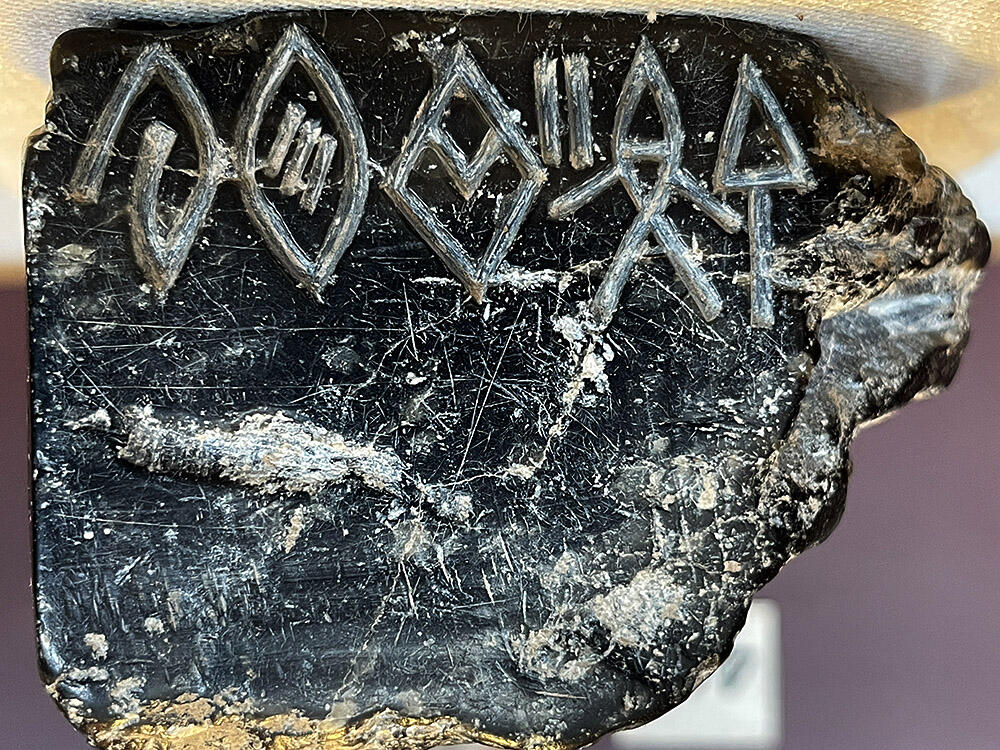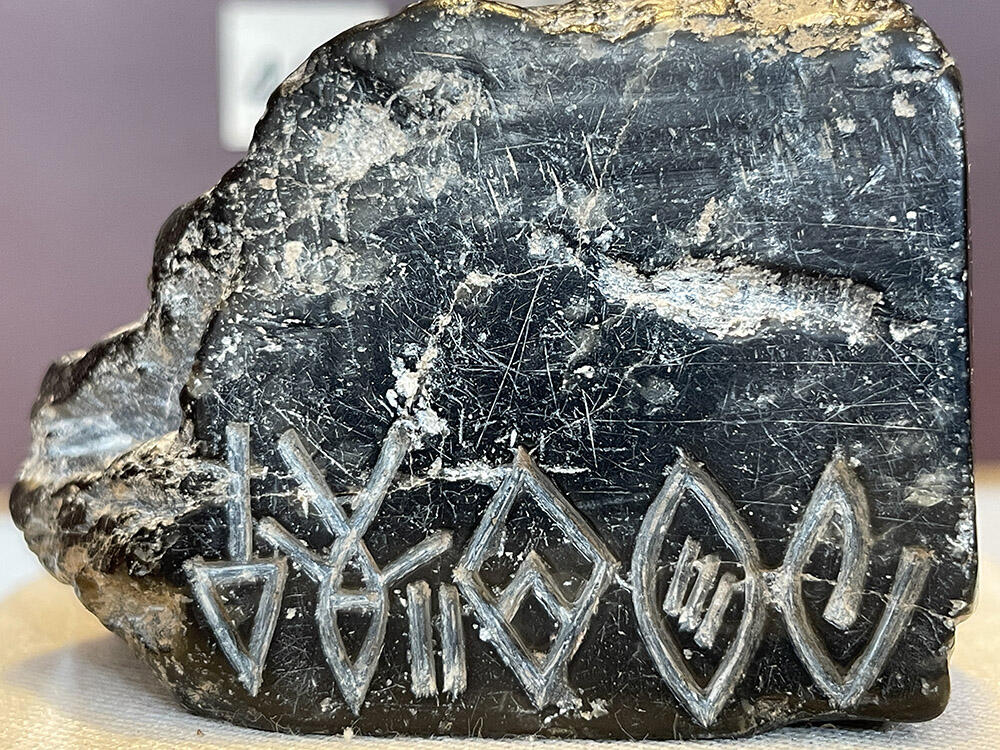One of the most intriguing of Indus inscriptions, displayed upside down in the glass case in the second image [above]. Was it going to be a seal or not? It looks like it. Dr. Kenoyer points out that "The depression under the script is the beginning of a unicorn horn or possibly the place for a head but there is not enough space and they may have discarded it. It is unfired steatite and therefore was never completed."
That the inscription was probably not intended to be longer is indicated by the relatively ample room on each side of the boundary characters. But it is the perfectly assured cuts of shapes, the geometry of it, the triangle of the arrow sign on the left, the curious geometric/anti-geometric center curve of the sign the right (Indus script was read from right to left on seal impressions, left to right on seals like the one above, the "negatives" from which sealings were cast [see Parpola, Deciphering the Indus Script, p. 66). Very confident design and execution in this burst of characters.
There is no real evidence for this, and many Indus script experts would disagree, but I have always thought that some Indus signs represent cities or places, simply because this was a key feature of neighbouring Mesopotamian cuneiform signs. I also think that ancient Indus cities, like in Mesopotamia in the second half of the third millennium (2500-2000 BCE), would have had very distinct characters if not languages, much like cities in the subcontinent today and historically. If, as so many argue – and the evidence in such states as Punjab, Sindh, Gujarat, Haryana, Maharashtra would agree with – the Indus civilization's veneer or integration layer involved different groups and regions uniting in some political or economic form, place names like cities today would have been important. On this inscription, the center double diamond-like quadrangle seems most like a place sign – many smaller settlements were walled, and had walled areas within like Surkotada – but this is pure speculation.




